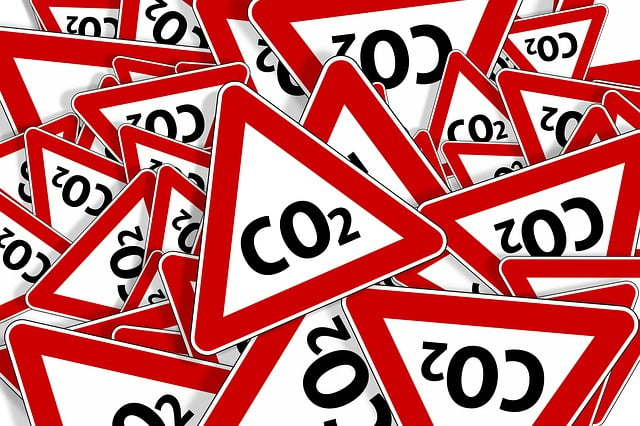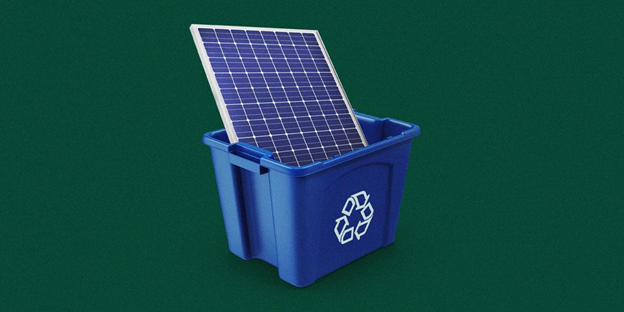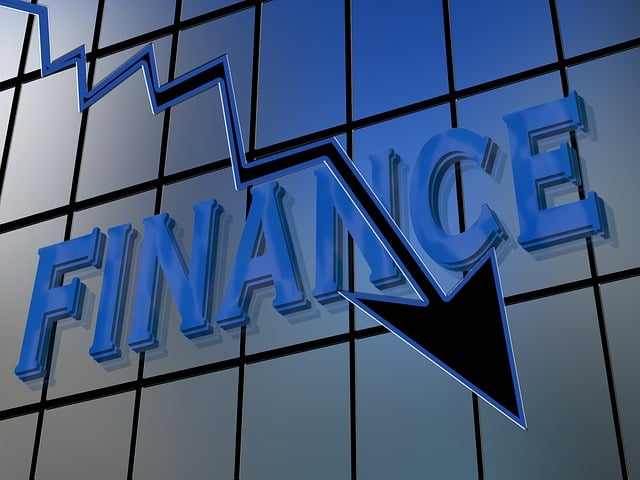In recent years, the world has started shifting its focus from traditional energy sources like coal and natural gas to renewable energy sources. This transition is driven by the increasing awareness of the effects of climate change, and the role of carbon emissions from fossil fuels in exacerbating this global warming. But what does this transition mean from an economic standpoint? Welcome to the enlightening journey into the economics of renewable energy.
The Economic Landscape of Renewable Energy
Understanding the Basics
The economics of renewable energy are complex and multi-faceted, shaped by various factors that range from the cost of renewable energy to the environmental impacts. These dynamics are crucial in shaping the future of energy, influencing decisions from individual households to national governments.
Renewable Energy and Its Sources
Renewable energy refers to energy generated from sources that replenish naturally over a short timescale. The sun (solar power), wind (wind power), water (hydropower), and organic materials (biomass) are key renewable energy sources.
The Major Players in Renewable Energy: Solar and Wind
Solar Power: Solar energy, harnessed using solar panels, is a crucial player in the renewable energy sector. With the increasing affordability of solar PV (photovoltaic) systems, many homes and businesses in different countries, including the United States and European Union, are switching to solar power.
Wind Power: Wind energy, tapped using wind turbines, is another significant contributor. From wind farms in the vast plains of the United States to offshore installations in the United Kingdom, wind power is making its mark.
The major shift to these renewable sources is driven by the desire for a lower risk to our environment and a need for energy efficiency.
The Economic Implications of Renewable Energy

Decoding the Costs
Understanding the economics of renewable energy requires a deep dive into the cost structures. The levelized cost of electricity (LCOE) and levelized cost of energy (LCOE) are essential indicators.
According to a report from the U.S. Energy Information Administration, the capital costs of building solar farms and wind farms have decreased dramatically in recent years. These capital investment reductions have made renewable energy generation more economically viable, even without government subsidies.
Impacts on the Job Market
A significant economic aspect of the shift towards renewable energy is job creation. New jobs in solar power, wind power, and electric vehicle sectors have contributed to robust economic growth.
While it’s just the beginning of our exploration into the economics of renewable energy, it’s evident that this transition is more than just an environmental necessity. It’s also a catalyst for economic development and transformation.
Fact Source: U.S. Energy Information Administration, “Levelized Cost and Levelized Avoided Cost of New Generation Resources in the Annual Energy Outlook 2021”
Renewable Energy and Climate Change
The Carbon Emissions Dilemma
Alarmingly, the world’s dominant energy sources, such as coal and natural gas, have significantly contributed to climate change due to their high carbon emissions. Coal plants, in particular, have been a major problem. Also, the burning of coal releases carbon dioxide, a greenhouse gas, which traps heat in our atmosphere leading to global warming.
Renewable Energy’s Role in Mitigating Climate Change
In contrast, renewable energy sources such as wind and solar power have minimal environmental impacts. They emit little to no greenhouse gases, making them a cleaner and greener energy alternative. Transitioning to these renewable power sources is crucial to mitigating the negative effect of fossil fuel plants on our planet.
The Financial Appeal of Renewable Energy
Saving on Electricity Bills
From a consumer’s perspective, the economics of renewable energy boils down to one basic need – affordable electricity. Thankfully, renewable energy resources like solar and wind energy have been providing just that. As the cost of renewable energy continues to fall, consumers can look forward to lower electric bills.
The Influence of Technology and Capital Costs
Firstly, the lower costs can be attributed to technological developments and decreasing capital costs. Secondly, the production costs for solar panels and wind turbines have been on a downward trajectory, making renewable energy infrastructure increasingly affordable. This has led to a decrease in the levelized cost of energy (LCOE), making renewable electricity more competitive than ever against fossil fuel-generated power.
The Impact on Industry and Private Investment

Renewable Energy: An Investment Opportunity
The falling costs of renewable energy are not just good news for consumers. Interestingly, they are also creating lucrative opportunities for investors. With responsible development and the right policies in place, the renewable energy sector has been attracting significant private investment.
A Catalyst for Industry Transformation
The economics of renewable energy is also driving transformation across industries. For instance, the auto industry is shifting towards electric vehicles due to their environmental benefits and potential for cost savings. Similarly, the coal industry, though facing challenges, has opportunities in areas such as carbon capture and coal mining site repurposing.
Creating Green Jobs
The renewable energy sector’s growth translates into job creation, often referred to as “green jobs.” These jobs range from manufacturing solar panels and wind turbines to installing renewable projects and maintaining the power grid.
Renewable Energy and Policy
Government Subsidies and Support
Importantly, Government policy plays a crucial role in shaping the economics of renewable energy. Furthermore, Government subsidies, tax credits, and regulatory measures can encourage renewable energy development and make renewable power more economically viable.
Also, these first two parts have set the stage for understanding the economics of renewable energy. In the coming sections, we will explore further its implications for industry, policy, and the future.
The Economic Cost of Fossil Fuels vs. Renewable Energy
True Costs of Fossil Fuels
When we discuss the economics of energy sources, it’s critical to consider the full range of costs. For fossil fuels, these are not just the direct production costs but also the environmental and health impacts. These “externalities” include air and water pollution, land degradation, and healthcare costs related to pollution-induced illnesses.
Calculating the Levelized Cost
In contrast, renewable energy sources, such as wind and solar power, have far fewer negative externalities. As per the U.S. Energy Information Administration, the levelized cost of energy (LCOE) from renewable sources has been consistently decreasing over the past decade. Did you know, the LCOE calculates the average total cost to build and operate a power-generating asset per unit of total electricity generated over the hypothetical lifetime?
Opportunities and Challenges in the Transition
Technological Development and Grid Infrastructure
Firstly, the transition to renewable energy comes with its share of challenges. A notable one is the need for significant technological development to improve energy storage and upgrade the power grid to better accommodate renewable electricity.
Overcoming Minimum Output Constraints
Unlike fossil fuel plants, renewable energy sources like solar and wind power have minimum output constraints—they produce energy only when the sun is shining or the wind is blowing. Overcoming these limitations requires innovative solutions, such as advanced battery storage technology and diversified renewable energy portfolios.
The Global Economics of Renewable Energy

Renewable Energy in Different Countries
The shift to renewable energy is a global phenomenon, with different countries at varying stages of transition. Interestingly, in the European Union, for instance, the drive towards green energy is strongly supported by stringent regulations and ambitious renewable energy targets. However, on the other hand, developing countries face unique challenges due to existing infrastructure and economic constraints.
Implications for Global Trade
The global shift towards renewable energy also has implications for trade. Correspondingly, Countries rich in renewable resources, like sunshine for solar power or wind for wind energy, can potentially become significant energy exporters.
Future Outlook: What’s Next for Renewable Energy Economics?
Continued Cost Declines
With ongoing technological advancements and economies of scale, the costs of renewable energy are expected to continue to fall. Besides, this trend suggests an increasing economic competitiveness of renewables compared to traditional energy sources.
Green Job Growth
As the renewable energy sector expands, so will the associated job market. From research and development to construction and maintenance, the sector will continue to provide new jobs, supporting local economies.
Furthermore, the economics of renewable energy is a rapidly evolving field. As the world continues to recognize the need for a sustainable energy future, understanding these economics becomes even more critical. Up next, we’ll delve deeper into the effect of renewables on the power sector and discuss their role in addressing climate change.
Renewable Energy’s Impact on the Power Sector
Reduction in Electricity Prices
As the renewable energy sector matures, economies of scale come into play, leading to falling costs and, consequently, a reduction in electricity prices. Thus, in several regions, renewable energy, especially wind and solar power, is increasingly becoming the most economical choice for new power generation, outpacing coal and natural gas.
A shift in Power Generation Methods
With renewables becoming a dominant energy source, we are witnessing a significant shift in the methods of power generation. Unlike traditional power plants, which are centralized, renewable energy generation tends to be more distributed. This has implications for utility companies and power grid management.
Renewable Energy and Climate Change Mitigation

Renewable Energy: A Key to Carbon Neutrality
Achieving carbon neutrality – a balance between emitting carbon and absorbing carbon from the atmosphere – is a critical goal in combating climate change. Additionally, renewable energy plays an essential role in this, as it generates power with minimal or no carbon emissions.
Renewable Energy and Carbon Credits
One economic instrument that is increasingly used in the fight against climate change is the carbon credit system. Renewable energy projects can earn carbon credits, which can be traded in international markets, adding an economic incentive for the shift to green energy.
Job Creation and Economic Development
The Economic Ripple Effect
The renewable energy sector’s growth has a significant ripple effect on economies, contributing to job creation and economic development. The sector creates jobs in various areas, including manufacturing, installation, operations, and maintenance, as well as in supporting sectors like transportation and finance.
Renewable Energy and Local Economies
The positive impact of renewable energy extends to local economies. For example, wind and solar farms can generate lease payments for landowners, and renewable energy projects can contribute to local tax revenues. Moreover, the sector can stimulate economic activity in rural areas where many renewable energy projects are located.
Frequently Asked Questions About Renewable Energy Economics
Why is renewable energy more economical in the long run?
Renewable energy sources like solar and wind have high upfront costs but low operating costs. Once the infrastructure is in place, the ‘fuel’ – sunlight and wind – is free. Additionally, renewable energy systems have longer lifespans compared to conventional power plants, making them more economical over time.
How does renewable energy contribute to job creation?
The renewable energy sector creates jobs in various fields, from research and development to manufacturing, installation, operations, and maintenance. These jobs also span a range of skill levels, from manual labor to advanced engineering.
What role does government policy play in the economics of renewable energy?
Government policies can significantly influence renewable energy economics. Policies such as tax incentives, subsidies, and renewable energy standards can lower the costs and risks associated with renewable energy projects, making them more attractive to investors and consumers.
As we wrap up this section, we’ve discussed the impact of renewables on the power sector, their role in climate change mitigation, and their influence on job creation and economic development. Up next, we will examine the future trends of renewable energy economics.
Advancements in Energy Storage
The future of renewable energy will largely be shaped by advancements in energy storage technologies. As the cost of batteries continues to decline and their performance improves, we can expect a significant boost in the reliability and cost-effectiveness of renewable energy sources. This will further reduce electricity prices and make renewables a more attractive investment.
The Role of Electric Vehicles
The rise of electric vehicles (EVs) will play a significant role in shaping the economics of renewable energy. The growth in EVs is driving increased demand for electricity, which could provide a substantial new market for renewable power.
Renewable Energy and Hydrogen Economy
The future might also see an increase in the production of green hydrogen using renewable energy. Green hydrogen could be a game-changer in sectors that are hard to decarbonize, like heavy industry and aviation, providing additional demand for renewable power.
Responsible Development of Renewable Energy

Environmental and Social Considerations
As the renewable energy sector grows, it will also need to address environmental and social considerations. For example, the extraction of materials for solar panels and batteries needs to be done in an environmentally responsible manner. The sector will also need to address social aspects, such as potential impacts on local communities and ensuring a just transition for workers from fossil fuel industries.
Balancing Energy Needs and Conservation
Renewable energy projects should also be developed in a manner that respects wildlife habitats and preserves natural landscapes. Responsible siting and operation of wind farms and solar farms are crucial to balance energy needs and conservation.
Conclusion: The Road Ahead for Renewable Energy
Renewable Energy: The Key to a Sustainable Future
From an economic perspective, renewable energy presents a viable and increasingly cost-effective alternative to traditional fossil fuels. As the world grapples with the dual challenges of energy security and climate change, renewable energy emerges as the key to a sustainable future.
The Inevitability of the Transition
While there are challenges to overcome, the transition to a clean energy future is not a matter of if, but when. The trends are clear – renewable energy is not only becoming cheaper but also more technologically advanced and reliable. This, combined with its environmental benefits, makes renewable energy a win-win solution for our energy needs.
Preparing for the Renewable Energy Economy
To make the most of the opportunities presented by the renewable energy transition, we need to prepare now. This means investing in education and training for the green jobs of the future, supporting research and development in clean energy technologies, and implementing policies that encourage the growth of the renewable energy sector.
In conclusion, understanding the economics of renewable energy is essential for policymakers, investors, and consumers alike as we navigate the path toward a clean, sustainable, and economically prosperous energy future.
The Intersection of Renewable Energy and Climate Policy
Policy Actions to Encourage Renewable Energy
Policies play a vital role in driving the adoption of renewable energy. From subsidies and tax incentives to feed-in tariffs and renewable portfolio standards, government actions significantly influence the economic viability of renewable energy projects. It’s essential for policies to be well-designed to efficiently stimulate growth in the sector while minimizing costs for taxpayers and consumers.
Carbon Pricing and Renewable Energy
One of the most effective policy tools for reducing greenhouse gas emissions and encouraging the adoption of renewable energy is carbon pricing. By putting a price on carbon emissions, fossil fuel-based energy becomes more expensive, and renewable energy becomes more competitive.
Renewable Energy and Corporate Social Responsibility
Renewable Energy: A Tool for CSR
Companies are increasingly using renewable energy as part of their corporate social responsibility (CSR) strategies. By investing in renewable energy projects or purchasing renewable energy for their operations, companies can demonstrate their commitment to sustainability and attract customers who value environmental responsibility.
The Role of Renewable Energy in ESG Investing
Renewable energy also plays a significant role in environmental, social, and governance (ESG) investing. ESG funds often prioritize companies that are active in the renewable energy sector or that use renewable energy in their operations. This trend provides an additional economic incentive for companies to adopt renewable energy.
The Role of Innovation in Renewable Energy Economics

Technological Innovation and Cost Reduction
Technological innovation plays a crucial role in reducing the cost of renewable energy. Advances in wind turbine design, solar panel efficiency, and battery technology have all contributed to making renewable energy more affordable. Continued innovation will be key to maintaining this downward cost trajectory.
Innovation in Renewable Energy Financing
In addition to technological innovation, there’s also a need for innovation in financing mechanisms for renewable energy. New models like green bonds, yields, and crowdfunding for renewable energy projects can help attract the necessary capital to continue growing the sector.
The Role of Public Perception in Renewable Energy Adoption
Understanding the Benefits of Renewable Energy
Public perception and acceptance play a significant role in the pace of renewable energy adoption. It’s crucial for individuals to understand the environmental and economic benefits of renewable energy, from mitigating climate change to creating jobs and reducing energy costs.
Addressing Misconceptions About Renewable Energy
There are also misconceptions about renewable energy that need to be addressed. For instance, some people believe that renewable energy is unreliable or that it’s more expensive than fossil fuels. Educating the public about the reliability of renewables and the true cost comparison with fossil fuels can help increase support for renewable energy.
In the next section, we will wrap up the article and reflect on the key takeaways from our exploration of the economics of renewable energy.
Reflection on the Economics of Renewable Energy
Renewable Energy: A Multi-Faceted Solution
As we reflect on the economics of renewable energy, it’s clear that renewable energy isn’t just about electricity. It’s also about job creation, economic growth, climate action, and sustainability. Renewable energy represents a multi-faceted solution that addresses numerous challenges simultaneously.
The Power of Market Forces
The market forces driving the renewable energy transition are incredibly powerful. As renewable energy technologies continue to improve and their costs continue to fall, they’re becoming the economically rational choice for energy consumers. This trend is expected to continue and even accelerate in the coming years.
Final Thoughts
A World Powered by Renewable Energy
A world powered primarily by renewable energy isn’t just a dream – it’s an economic necessity and an achievable goal. As our understanding of the economics of renewable energy grows, we can make better decisions that accelerate the transition to this future.
The Time to Act is Now
The window of opportunity for preventing catastrophic climate change is closing rapidly. The economic case for renewable energy has never been stronger, and the time to act is now. As consumers, investors, and citizens, we all have a role to play in making the transition to renewable energy a reality.
Postscript
Join the Renewable Energy Revolution
We invite you to join the renewable energy revolution. Whether you’re a homeowner considering installing solar panels, a business leader looking to power your operations with clean energy, or a policy maker developing strategies for a sustainable energy future, we hope that this exploration of the economics of renewable energy has been informative and inspiring.
The Future is Bright
In conclusion, the future of renewable energy is bright. While there are challenges ahead, the opportunities are immense. The shift towards renewable energy isn’t just a technological transition, but an economic one – and it promises to create a more sustainable and prosperous world for all of us.
This concludes our in-depth look at the economics of renewable energy. The journey towards a renewable-powered world is complex and multi-faceted, filled with challenges and opportunities. It is our hope that this exploration has provided valuable insights and sparked thoughtful conversations about our energy future. As we move forward, let us embrace renewable energy not only as an environmentally responsible choice but as an economically sound one as well.
Recent Posts
Understanding Energy and Electricity: The Power For Progress
Energy and Electricity Energy and electricity are integral components of modern life, powering everything from homes and businesses to transportation and communication. Without them, the...
The Future of Wind Energy The future of wind energy is set to play a critical role in addressing global energy needs while combating climate change. As renewable energy sources like wind and...


